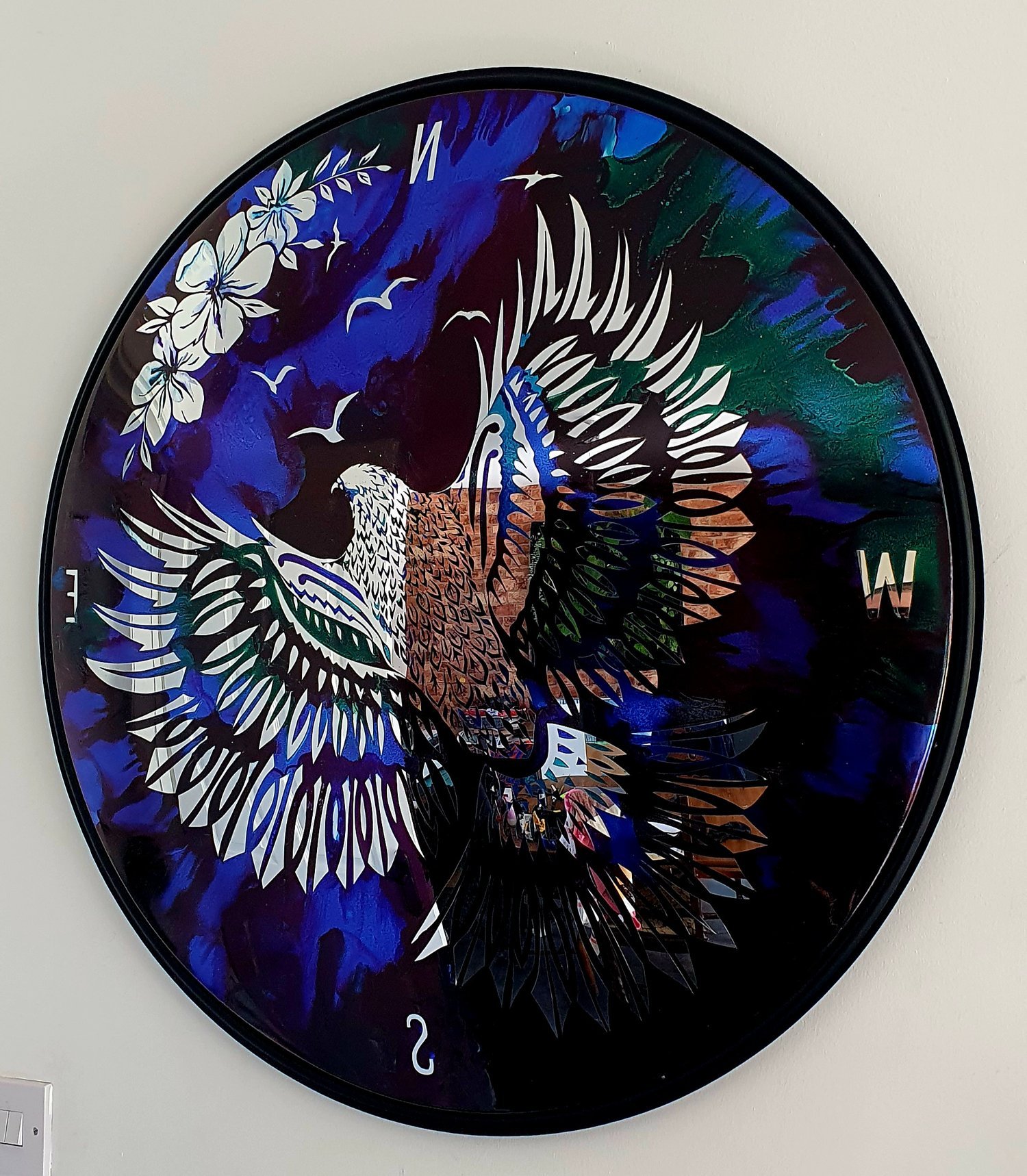Frederick Worrell is an acclaimed award-winning UK-based Māori artist whose vibrant artworks seamlessly blend traditional Māori cultural elements with contemporary techniques. Born and raised in Whakatāne, New Zealand, Worrell draws inspiration from his rich Māori heritage and the breathtaking natural landscapes that surround him. Worrell's artistic practice mainly revolves around the use of alcohol inks on convex mirrors, resulting in captivating pieces that emphasise the allure of reflective surfaces. The mirrored artworks he creates possess a mesmerising quality, drawing viewers in and encouraging them to engage with the artwork.
Worrell's artistic style is characterized by his masterful use of colour, texture, and symbolism. His works often feature mesmerising motifs derived from ancestral mythology, exploring themes of identity, connection to the land, and the importance of cultural heritage. Through his art, Worrell seeks to bridge the gap between the past and the present, inviting viewers to reflect on the enduring wisdom and beauty of Māori culture.
Worrell's artistic prowess has garnered him widespread recognition both in New Zealand and internationally. His artworks have been exhibited in prestigious galleries and museums, captivating audiences with their powerful narratives and visually-striking compositions. Worrell's commitment to promoting cultural understanding and appreciation has led him to conduct workshops and mentor aspiring artists, passing down traditional techniques and encouraging the next generation to explore their creative potential.













